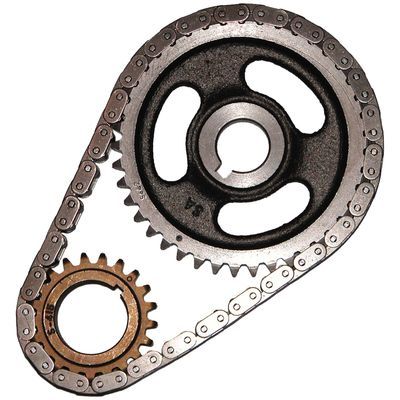OpusTheTailGunner
New member
It's been a little quiet as I waited to hear from my local machinist on the block and the rocker assembly. Finally have some updates to share.
The Rocker Assembly - In another thread, I'd mentioned the difficulty I was having in getting the pedestals to move. My local machine shop offered to dip it in some harsher chemicals and see what they could do with it. Long story short, they couldn't get the pedestals to move either, but were able to completely free up all the rocker arms. Their advice was to re-use it "as-is" instead of mangling it trying to get those pedestals off. I'll shelve that for the time being while I sort out the head and block.
Block and Cylinders - After removing the pistons, I noted that cylinder 1 had a bit of a ridge to it, and it was something I could easily feel. The rest of the cylinders got progressively less "ridgy" and number 6 could really only be felt with my fingernail. Just heard back from the machine shop and they recommend a 0.040 overbore to ensure that the ridge gets removed completely. The lesson I took from this: if you can easily feel a ridge, it's not a good thing.
Compression Ratio - I was waiting to hear about the overbore requirements so that I could calculate the compression ratio. My '73 250 engine has a bore of 3.68 inches, a stroke of 3.91 inches and a piston bowl of about 6.5 CCs. Using the numbers from the Performance Handbook, I figured the stock compression ratio at about 7.6. This increases to a little over 7.7 with the overbore. Since the Handbook recommends a static compression ratio between 8.7 and 9.5, I have some choices to make. Milling the deck by 0.060 only gets me to about 8.5, so I'd need to shave the head by another 0.020 to get to about 8.75. That seems like a lot of milling and some extra work to ensure the head bolts seat properly. BUT, if I go with the 2.5L HSC Pistons and conrods, I can reduce the deck clearance from 0.15 (stock) to 0.04 and get a static compression ratio of 9.2 with a straight swap and no milling.
So I'm leaning towards the HSC pistons and conrods as the best solution to pump up the compression.
The Rocker Assembly - In another thread, I'd mentioned the difficulty I was having in getting the pedestals to move. My local machine shop offered to dip it in some harsher chemicals and see what they could do with it. Long story short, they couldn't get the pedestals to move either, but were able to completely free up all the rocker arms. Their advice was to re-use it "as-is" instead of mangling it trying to get those pedestals off. I'll shelve that for the time being while I sort out the head and block.
Block and Cylinders - After removing the pistons, I noted that cylinder 1 had a bit of a ridge to it, and it was something I could easily feel. The rest of the cylinders got progressively less "ridgy" and number 6 could really only be felt with my fingernail. Just heard back from the machine shop and they recommend a 0.040 overbore to ensure that the ridge gets removed completely. The lesson I took from this: if you can easily feel a ridge, it's not a good thing.
Compression Ratio - I was waiting to hear about the overbore requirements so that I could calculate the compression ratio. My '73 250 engine has a bore of 3.68 inches, a stroke of 3.91 inches and a piston bowl of about 6.5 CCs. Using the numbers from the Performance Handbook, I figured the stock compression ratio at about 7.6. This increases to a little over 7.7 with the overbore. Since the Handbook recommends a static compression ratio between 8.7 and 9.5, I have some choices to make. Milling the deck by 0.060 only gets me to about 8.5, so I'd need to shave the head by another 0.020 to get to about 8.75. That seems like a lot of milling and some extra work to ensure the head bolts seat properly. BUT, if I go with the 2.5L HSC Pistons and conrods, I can reduce the deck clearance from 0.15 (stock) to 0.04 and get a static compression ratio of 9.2 with a straight swap and no milling.
So I'm leaning towards the HSC pistons and conrods as the best solution to pump up the compression.


 Congrats seems like the machine shop did the block work fast! Did you acquire a rebuilt set of six of the HSC 2.5L connecting Rods for your short block build up? If so you should then have your machine shop press the new set of pistons and pins on the Rods, it takes some special equipment to be able to do that job. Best of luck
Congrats seems like the machine shop did the block work fast! Did you acquire a rebuilt set of six of the HSC 2.5L connecting Rods for your short block build up? If so you should then have your machine shop press the new set of pistons and pins on the Rods, it takes some special equipment to be able to do that job. Best of luck 




